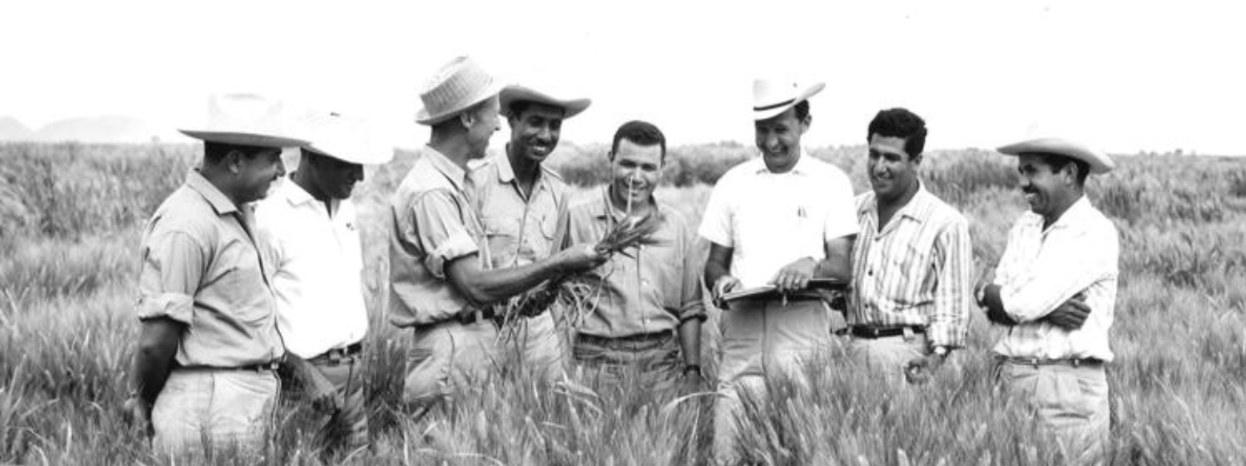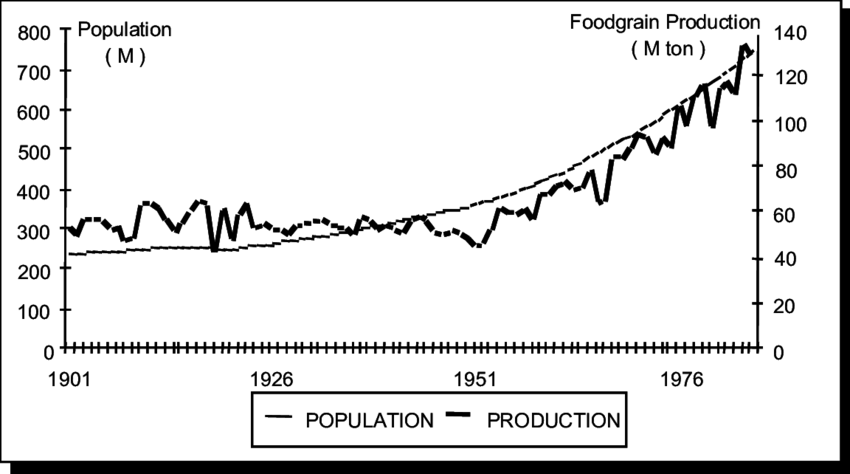In 1942, the Mexican Government and Rockefeller Foundation met in Mexico to begin a research initiative that aimed to create resilient varieties of wheat with improved crop yield. In 1944, American Scientist Norman Borlaug took control of the initiative, and by 1950 he had created several high-yield crops that were significantly superior to traditional counterparts. After leaving Mexico in the early 1960s, Borlaug took the following decades to continue his work in India, Pakistan, and other developing nations. Throughout the following decades, Borlaug’s work and the advancements made in Mexico revolutionized agriculture worldwide.

Norman Borlaug in Mexico with a group of Scientists, 1951, Norman Borlaug Foundation
"Norman Borlaug, who was the originator of what was a dwarf wheat variety in Mexico, is considered the godfather of the Green Revolution. The varieties of wheat that he developed there became a model for what could be done in other staple crops around the world."
-Ray Offenheiser, PBS: The Green Revolution, 2020

